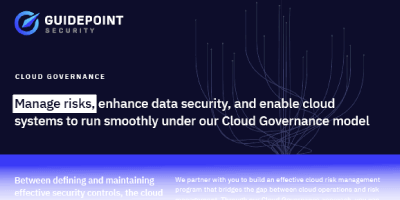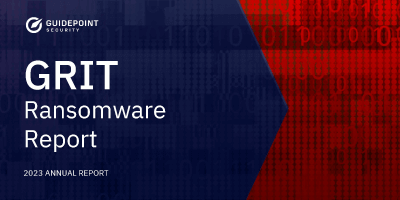What is vulnerability management?
Vulnerability management describes the processes, strategies, tools, and technologies associated with identifying, managing, and remediating security vulnerabilities within a system, software, network, application, or device.
What is a vulnerability?
Within the context of IT and cybersecurity, ISO defines a vulnerability as the “functional behavior of a product or service that violates an implicit or explicit security policy.” In essence, vulnerabilities are security weaknesses that enable a security event or consequence.
What causes a vulnerability?
The causes of vulnerabilities include errors in system configurations, coding flaws, mistakes in system design, and insecure protocol and format specifications.
The Importance of Vulnerability Management
Despite efforts to improve security in software and systems, vulnerabilities occur because errors are inevitable in human-written code and human-designed systems. Essentially, modern software, devices, and systems are so complex that it becomes impossible to create or manage them without vulnerabilities.
Threat actors leverage these vulnerabilities to attack software and systems and, ultimately, the businesses using them. In an era of incredibly complex systems and software, vulnerability management helps businesses identify and analyze flaws and bugs that may exist in systems and software, and mitigate these vulnerabilities to prevent attacks.
What is involved in a vulnerability management program?
Vulnerability management includes:
- Identification of bugs, flaws, and potentially dangerous software code that could have an impact on the security of the organization
- Managing patches and updates issued for systems and software
- Blocking attacks targeted at vulnerabilities
- Managing and prioritizing risks associated with vulnerabilities
- Aligning vulnerability management to other relevant programs and processes, such as configuration management
- Compliance with regulatory requirements
What is the difference between vulnerability management and vulnerability assessment?
Vulnerability management and vulnerability assessment, while interconnected, serve unique roles. Each of them is vital for upper-level management to understand for effective communication with leadership.
A vulnerability assessment is a snapshot process that focuses on identifying and cataloging vulnerabilities in a system. This assessment scans your systems, networks, and software to detect security weaknesses and prevent potential damage.
Vulnerability management is a continuous, ongoing process that prioritizes, remediates, and mitigates potential vulnerabilities. You can consider this process as a strategic approach that continuously addresses and manages your problems, whereas vulnerability assessments tell you what your problems are.
What is a CVSS and CVE?
The Common Vulnerability Scoring System (CVSS) is an open framework for defining and sharing the characteristics and severity of software vulnerabilities. CVSS scores range from 0.0 (none) to 10.0 (critical). The National Vulnerability Database (NVD), managed by NIST, is a “U.S. government repository of standards-based vulnerability management data represented using the Security Content Automation Protocol (SCAP).” This database includes an updated source of common vulnerabilities and exposures (CVEs), as well as security-related misconfigurations, software flaws, product names, and impact metrics.
The Mitre Corporation is the source for CVEs. It is synced with the NVD and includes information on each vulnerability, from 0.0 (no vulnerabilities) to 10.0 (critical vulnerabilities).
What is included in this process?
Vulnerability management is more than just managing updates and patches. It involves a comprehensive and top-down approach that includes design, development, implementation, enhancement, and sustainability of vulnerability management and any associated programs and processes, like configuration management.
Depending on organizational needs, vulnerability management may include developing a program or refining an existing one, focusing on policies, standards, procedures, and workflows. It also includes the review and setup of all configurations, as well as the deployment of scanners, agents, cloud connectors, policies, credentials, and integrations.
At a high level, vulnerability management is a cyclical process that involves the following steps:
- Discover: Inventory assets across the enterprise, including operating systems, software, applications, and configurations.
- Prioritize: Categorize assets into groups based on criticality and risk-based prioritization.
- Assess: Regularly assess the risk baseline for vulnerabilities and risks.
- Remediate: Patch, update, and reconfigure identified vulnerabilities.
- Verify: Confirm remediation is complete through scans and additional reporting.
- Report: Develop and distribute reports to key stakeholders on the current vulnerability state, including any existing vulnerabilities and remediations.
Common challenges in a vulnerability management process
Identifying all vulnerabilities in a complex IT environment
Identifying every vulnerability in a large and complex IT environment can be a daunting task. Many organizations use various devices, software applications, and intricate network configurations, leading to a high level of complexity that makes it tough to thoroughly scan and assess every component.
With that said, advanced scanning tools that execute wide-ranging analyses can detect the majority of vulnerabilities to prevent potential breaches. These tools must be regularly updated to detect vulnerabilities but can help organizations balance extensive coverage with precision.
Prioritizing vulnerabilities effectively
Effectively prioritization is based on criteria like threat severity, exploitability, and the potential impact on business operations. Timely and accurate prioritization can be difficult due to the dynamic nature of threats, the varying complexity of IT environments, and the need to balance security with business continuity. Our vulnerability management experts at GuidePoint Security can help you make these determinations quickly and effectively to mitigate your risks and allocate your resources more efficiently.
Keeping up with frequently emerging new vulnerabilities
Keeping up with continuously emerging vulnerabilities is a major challenge for many organizations. The fast pace of new threats outstripping cybersecurity measures, coupled with limited resources and expertise, makes it difficult to stay ahead. This constant flux requires ongoing vigilance and updating of security practices.
Managing patches and updates efficiently
Patch management can present logistical and technical challenges, and organizations must often navigate compatibility issues to ensure their updates don't conflict with other systems. Deploying patches without disrupting your business operations can be a delicate balance to strike; updates often necessitate system reboots or downtime and coordinating these activities adds another layer of complexity to the patch management process.
Integrating vulnerability management with other security systems
Integrating vulnerability management processes with your other security systems, firewalls, and intrusion detection systems is essential for a unified security posture. Achieving seamless integration poses several challenges including compatibility issues, data overload, real-time coordination, constant updating, and customization and configuration. This integration, however, is crucial for correlating data across systems and enhancing your organization's overall threat detection and response capabilities.
What are the goals of vulnerability management?
Businesses use vulnerability management to achieve several important vulnerability management goals:
- Proactively identify vulnerabilities and remediate them before they are exploited by threat actors
- Estimate, prioritize, and manage business risk
- Establish a process and frequency for scanning for vulnerabilities
- Create a process
What are the benefits of vulnerability management?
With system and software complexity growing, vulnerability management provides businesses with the opportunity to:
- Proactively identify threats
- Manage security risks
- Ensure compliance with regulation
- Mitigate potential and existing threats
How does it help endpoint security?
Vulnerability management is pivotal in enhancing endpoint security. Endpoint devices, such as laptops and smartphones, are prime targets for cyber attacks. Effective vulnerability management identifies and mitigates these devices' vulnerabilities, significantly reducing the attack surface. This process involves regular scans to detect weaknesses like outdated software, unpatched systems, and misconfigured settings. Prompt remediation through patching and updates strengthens endpoint defenses. Integrating vulnerability management with endpoint security systems further elevates protection, enabling real-time threat monitoring and rapid response. This synergy is essential in establishing a resilient defense against sophisticated cyber threats, ensuring endpoints are secure and robust components of the network.
Vulnerability Management—Next Steps
Working with a vulnerability management service provider can help improve your business's security by assisting with the selection, implementation, optimization, and management of vulnerabilities and vulnerability technologies. Schedule a customized security consultation today with one of the GuidePoint Security experts to help you determine your vulnerability management needs.


























